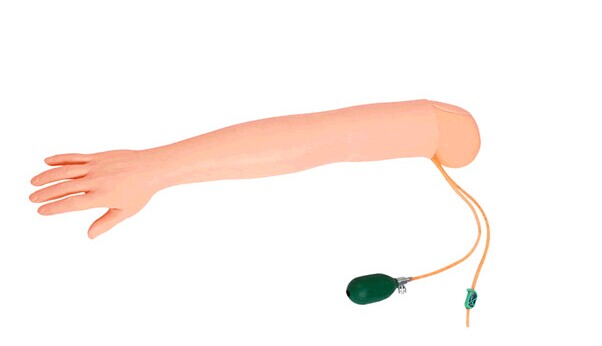and processes to accurately simulate the structure of children's arteries to ensure its high simulation and practicability. Here's a breakdown of how to do it:

1. Design based on real anatomical data
The design of the child arterial injection model is based on real child anatomical data, specifically for the precise reproduction of the artery structure of the child's left forearm. This includes the direction, branches, diameter of the arteries, and the surrounding bone and muscle structure. Designers refer to medical maps, anatomical studies and clinical practice to ensure that every detail of the model is consistent with the child's real physical characteristics.
Second, high-precision materials and processes
Material selection: The model is usually made of imported polymer materials, latex materials and PVC materials. These materials have good flexibility and durability and are able to simulate the touch and elasticity of children's skin. At the same time, the blood vessels are made of latex material, which can simulate the elasticity and toughness of real blood vessels.
Process manufacturing: The manufacturing process of the model adopts a high-precision mold casting or injection molding process to ensure that every detail of the model is accurate. In addition, the model will also go through fine polishing and coloring treatment to make its appearance more realistic and skin tone more beautiful.
3. Simulate arterial pulsation function
To more realistically simulate the pulsation of a child's arteries, the model is often equipped with a pulse ball or mechanical device. This device simulates the pulsation of the radial artery manually or electrically, allowing students to intuitively feel the position and pulsation characteristics of the artery. This simulation function not only helps students master the skills and precautions of arterial injection, but also improves their operational confidence and accuracy.
4. Replaceable skin and blood vessels
In order to facilitate repeated practice and to simulate the operation in different situations, children's arterial injection models are usually designed with replaceable skin and blood vessels. This means that students can replace damaged or contaminated parts during the simulation, thus extending the service life of the model and keeping it in good working condition.
To sum up, the children's arterial injection model can accurately simulate the structure of children's arteries through the design based on real anatomical data, the application of high-precision materials and processes, the realization of simulated arterial pulsation function, and the design of replaceable skin and blood vessels. This highly simulated model provides strong support for medical education and training, helping to produce more health care personnel with solid skills and rich experience.
